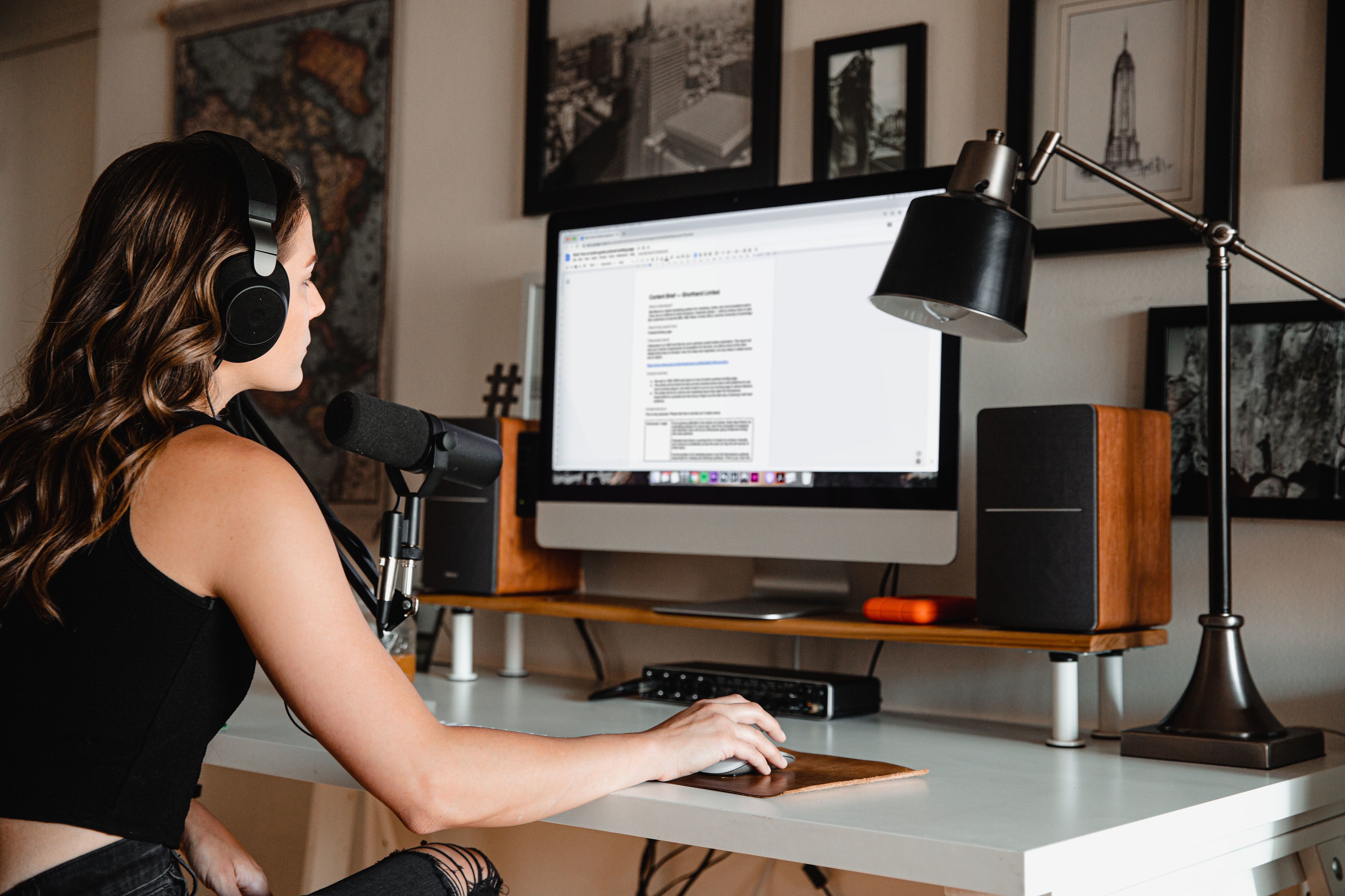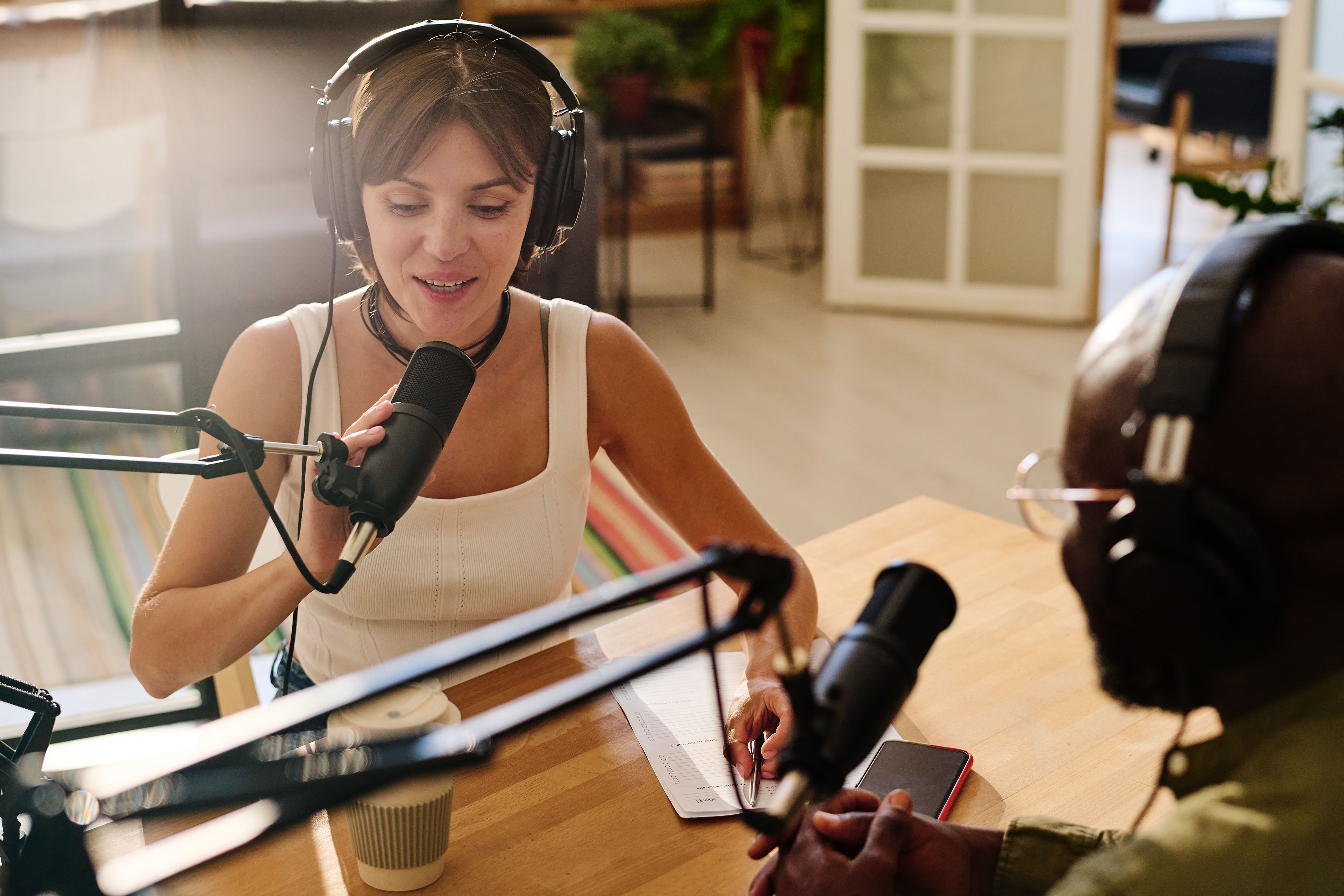How to build a great podcast landing page

From growing daffodils to the history of cheese, these days there’s an interesting podcast for every topic, with an enthusiastic crowd of listeners tuning in to every episode.
By Kiera Abbamonte
As brands and media companies increasingly look toward owned media, podcasts have emerged as a rapidly growing option. Done well, they can be a hugely powerful tool to build and inform a community, attract leads, and more.
Because of the growing popularity of podcasts, communications and marketing teams may find themselves suddenly responsible for creating and sharing one.
If this is you, don’t panic, this is the article for you! Here, we outline the basics in building a well-designed landing page for your podcast, with ideas to help ensure your landing page is accessible, attracts the right audience, and turns casual listeners into subscribers.
What platform should I use for my landing page?

Before you can get started building your podcast landing page, you have to choose where it will live. If you already have a website — and your website builder supports custom landing pages and embedded audio — that’s your answer right there. If not, you may need to use a separate platform to build your podcast landing page.
If that’s you, there’s good news: there are tons of convenient and user-friendly options available these days. You can build a home page for your podcast on:
- Squarespace
- Wordpress
- Shorthand
- Podcastpage
- ConvertKit
The technical workflow of building a podcast landing page will vary based on the platform you use, but modern tools like these ensure the process is both user-friendly and highly customisable to your brand and podcast. That means you can build and launch the page quickly and ensure it includes all the key elements you need.
What should I include on my podcast landing page?

Speaking of key elements, while your web page builder may offer landing page templates to start, your podcast landing page can and should be customised to your unique brand, podcast niche, and goals.
That said, the most effective home page for your podcast needs to include details potential listeners are looking for, like what the podcast is about, available episodes, and where they can subscribe and listen. You should also ensure your landing page makes the podcast accessible to audience members of all needs and abilities.
Here’s the full list of our recommendations for what to include on your podcast landing page:
- The title of your podcast and a brief explanation of what it’s about and who it’s for, including the topic(s) you discuss and guests you include (if any).
- A subscribe button call-to-action (CTA) to make quick and easy work of helping first-time listeners become engaged audience members.
- Links to popular podcast platforms like Apple Podcasts, Amazon Music, Audible, Spotify, YouTube, and Google Podcasts — so your audience can listen wherever they’re most comfortable.
- Links to your most popular or foundational episodes, so new listeners can get up to speed.
- A full list of podcast episodes (with each episode linking out to its own webpage). If your podcast is a longform story told in chapters, think about how you’ll link these chapters together so that listeners can find the latest episodes with ease.
- Testimonials from your audience.
- Credits including any guests, sponsors, creators of music or artwork used, and contributors (including the host).
- A bio on any and all podcast hosts, along with links to their social media profile(s).
- A newsletter signup form to let listeners opt-in to your email list.
Depending on your brand and goals for the podcast, you may include other information on the landing page, too. But try to limit unnecessary content that distracts from the goal of building your audience.
What are the best platforms for podcast audio?

Before you can embed podcast audio onto your landing page, you’ll need to choose a hosting platform. Today, there are a lot of options from the most popular (like SoundCloud and Transistor) to more niche solutions.
Here’s an incomplete list of some of the best podcast hosting sites according to Software Testing Help:
- Soundcloud
- Stitcher
- Buzzsprout
- PodBean
- Libsyn
- Anchor
- Audioboom
- RSS.com
- Transistor
- Castos
- Captivate
- Resonate
- Spreaker
- Blubrry
- Simplecast
- Fusebox
Now, we know that’s a lot of options. How do you choose? Here’s what we recommend considering when you evaluate podcast platforms:
- The features you need (and want): The best platforms do a lot more than just host your audio. Some platforms help with podcast content distribution by automatically creating an RSS and uploading new podcast episodes to platforms like Apple Podcasts and Spotify, and others offer tools to help you edit podcast audio before publishing. Some platforms add features like timestamps, support podcast monetisation through ads, sponsors, paid subscriptions, and more, and include analytics to help measure and optimise your podcast’s performance.
- Your experience level: Some platforms are great for beginners, while others require more advanced know-how — around podcasting, audio editing, and more — to really get the most value.
- Your budget: Many of the hosting platforms offer a free tier, but it’s important to investigate whether that covers your planned cadence and, if not, how any pricing fits into your podcasting budget.
- Options for embedding audio on your landing page: Can you customise the embeddable audio player to match your brand colours and fonts, for example?
How do I embed the audio into a webpage?

The process for integrating episode audio onto your podcast landing page varies depending on the web building and podcast hosting platforms you use. Some of the podcast hosting platforms we mentioned above offer ready-made templates to create a landing page that integrates your podcast audio or offer customisable elements you can simply drag-and-drop onto the landing page.
In lieu of native support, the simplest way to embed audio onto your landing page is via the HTML embed code provided by your podcast hosting site. Any hosting platform should offer an embed code and some degree of customisation to alter the colours and style to match your brand and podcast website.
Once customised, you can simply copy and paste the HTML code into your landing page code, choosing wherever you want the on-page audio player to be.
How do I make sure people can find my podcast?

With your podcast landing page built and published, you’re ready to start bringing listeners into your community. To do that, they need to be able to find your podcast.
Publish on multiple listening platforms
There are several ways to broaden your podcast’s reach, but the most important is to publish it on multiple, popular podcast platforms. At a minimum, publish on the big four: Apple Podcasts, Google Podcasts, YouTube, and Spotify. Each of these podcast apps boast millions of listeners you don’t want to miss out on.
This is an easy hack, too: you don’t even have to manually upload your episode to every platform. Many of the audio platforms above will automatically upload your new episodes to the podcast directories you choose. If your host doesn’t offer distribution, you can still create a podcast RSS feed to automate the upload process.
Optimise for the major platforms
Like any type of content, your podcast will benefit from a bit of deliberate optimisation. By creating a hub landing page, along with episode pages featuring a written summary or transcript, you can optimise your podcast to rank in Google searches — just as you would a blog post, for example.
But podcast SEO goes beyond Google. You can optimise your podcast to rank higher in searches on podcast directories like Spotify, Apple, and YouTube, too.
Giving your podcast a fitting title and eye-catching artwork is a good start. From there, use the show description and individual episode summaries to highlight the topics you cover. The key here is to think about the words and phrases your audience would use to talk about and search for a show like yours.
Make your podcast accessible
Making your podcast widely accessible to people of all needs and abilities ensures you aren’t leaving out any potential audience members.
Focus on your audio first, to ensure it’s as clear and easy to hear as possible. Choose a high-quality podcast microphone and discourage guests and hosts from speaking over one another.
Then, include detailed episode descriptions, show notes, a written transcript and/or captions for each episode to accommodate those who need (or just prefer!) to read instead of listen.
We also recommend choosing an accessible audio player that allows listeners to control playback, clearly labels buttons and controls, and turns off autoplay.
Wrapping up

Beyond distributing and growing your podcast, putting together your podcast landing page can be a crucial exercise in thinking through the message and purpose of your podcast. What kind of audience do you want to attract and what do you want to say to those listeners?
It’s important to think about the longevity of your podcast, too. Of course, you hope your podcast is popular! But what will your landing page look like when you have 100 episodes? How will you engage a large community of listeners? Will you monetise that audience? And if so, how?
As your podcast grows, your technical needs may evolve, but with a plan and the right tools in place, the sky’s the limit.

